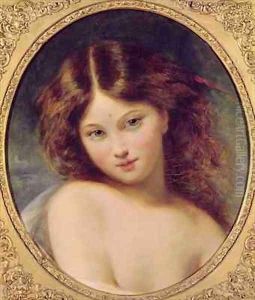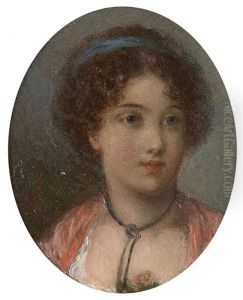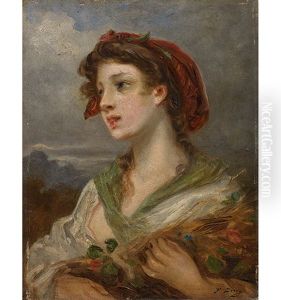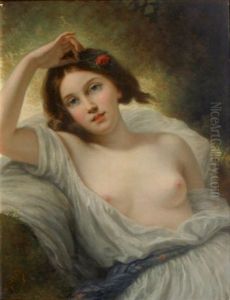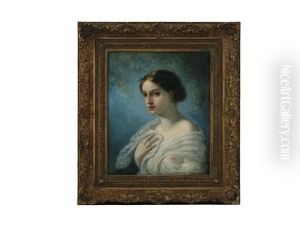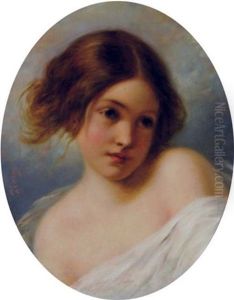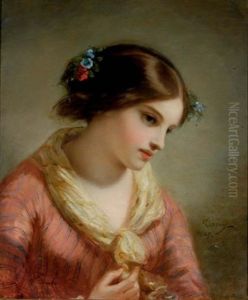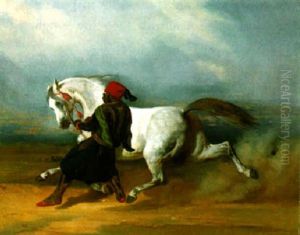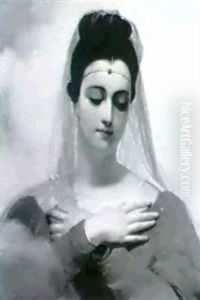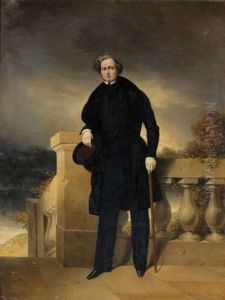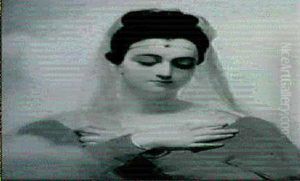Pierre Joseph Dedreux-Dorcy Paintings
Pierre Joseph Dedreux-Dorcy, born on November 24, 1789, in Paris, France, was a notable French artist of the 19th century. His contributions to the art world were primarily in the genre of portraiture, where he captured the likenesses of many prominent figures of his time. Dedreux-Dorcy was also known for his connections with the Parisian art scene and his influence on other artists.
Dedreux-Dorcy was born into a period of great change; the French Revolution had just begun, which would lead to significant political and social transformations. Despite the tumultuous times, he managed to receive a solid education in the arts. He studied under the guidance of French painter Anne-Louis Girodet-Trioson, who was a student of the famous Jacques-Louis David. This classical training would greatly influence Dedreux-Dorcy's style, characterized by its precision and adherence to the neoclassical ideals of clarity and harmony.
Throughout his career, Dedreux-Dorcy exhibited his works at the Salon, the official art exhibition of the Académie des Beaux-Arts in Paris. His portraits were well-received, and he gained a reputation for his ability to depict his subjects with both accuracy and psychological insight. Despite his success as a portraitist, Dedreux-Dorcy did not limit himself to this genre alone. He was also known for his historical scenes, landscapes, and genre paintings, which depicted everyday life with a similar attention to detail and emotion.
One of the most interesting aspects of Dedreux-Dorcy's life was his relationship with his nephew, Alfred Dedreux, who would also become a painter. Pierre Joseph Dedreux-Dorcy served as a mentor to the young Alfred, encouraging his artistic development. Alfred would go on to achieve his own success, particularly in the field of equine painting, a genre that his uncle had also dabbled in.
Pierre Joseph Dedreux-Dorcy lived through a dynamic period in French history, which included the rise and fall of Napoleon, the restoration of the Bourbon monarchy, the July Monarchy, the Second Republic, and the establishment of the Second Empire under Napoleon III. The shifts in political power during these times also brought changes to the art world, with different styles and movements emerging. Dedreux-Dorcy's work remained relatively conservative throughout these changes, maintaining a focus on the techniques and aesthetics he had learned in his youth.
Dedreux-Dorcy passed away on January 10, 1874, in Paris. Though he may not be as widely recognized today as some of his contemporaries, his work remains a testament to the art of portraiture and the neoclassical style that dominated French art in the early part of the 19th century. His paintings continue to be studied and appreciated for their craftsmanship and historical value.
